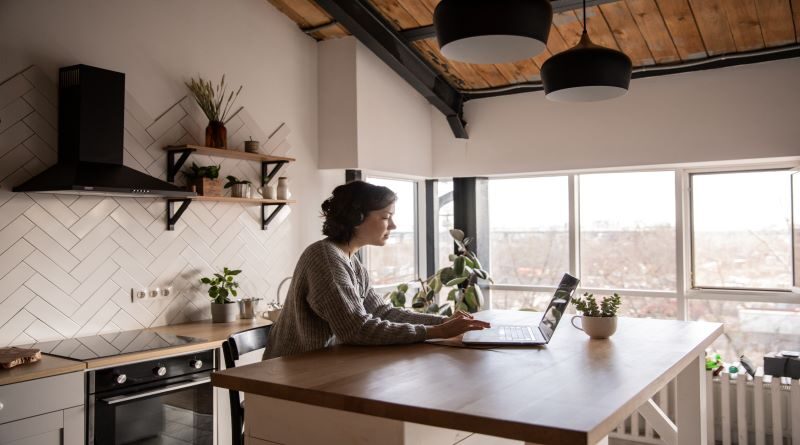How To Devise A Nourishing Learning Environment For Juveniles At How To Home
Home is the place where your child’s education starts. Their learning start from every minor moment they see or face at home. The nourishing learning environment at home casts a lasting impact on the juveniles’ attitude towards the education and learning process. Such a creative environment at home thus encourages children for active learning. It also fosters new abilities which make them explore the world from a family context.
So, shouldn’t your home depict the best learning environment for your children? Of course yes! But people often don’t know where to start and what to do for making their home the best place for their children to learn.
In the current pandemic where schools are closed and children are at homes, parents are worried about their kids’ attitudes towards education. Juveniles don’t seem to pay any attention to their studies. But don’t worry here is the solution to this problem of parents.
Before devising the learning environment at home, there are two factors that must be considered, and that are:
- Child’s Age
The methods used for toddlers may not work for the children of high school. So, alter your home-based learning environment according to the age of your child which may best suit his educational prerequisites.
For toddlers, a literacy-rich environment should be preferred which may include imaginative play, rule-governed play, a library, wooden puzzles, and stacking activities. While on the other hand, for grown-ups you don’t need such toys to encourage them. But possibly you only need to arrange a noiseless nook with a table, chair, and sufficient lighting.
- Child’s Interests
The most efficient learning environment would be that which matches the juveniles’ personal interests otherwise it would be of no use. You as a parent, must know what motivates & inspires them? What triggers their interests? To what they are attracted? And what they love to learn about?
After recognizing your child’s interests devise the learning environment accordingly. Children would feel excitement while learning when they would have the environment according to their own taste. And the time when anyone’s mind is full of excitement and eagerness for learning is the most productive time one can have. The output from such state of mind can also be extraordinary.
So don’t you want your children to give an extraordinary output? Yes! Every parent wants! Just follow the understated steps to get astonishing output from your children while learning process:
How to Devise a Nourishing Learning Environment at Home?
- Stipulate Learning Area First
The first thing to do for devising a good nourishing learning environment is to choose a specific area for learning. This way you would be expressing value to your children’s learning process that you have allotted a separate physical space for them. And specifying learning area doesn’t mean that it would be expensive or expansive. But it can be an isolated room with no households or it can be the corner of dining room, or even it can be a home office.
Whatever the part of the house is it must be well lit, noiseless, and have adequate temperature. There must be a sitting place and laying out work. But avoid using bedroom as a learning place as children would find many distractions in it as well as they may feel lazy in learning process.
Learning place must have all the learning essentials. For example, if one of your kids is engineer extraordinaire, provide him enough place for building whole cities along with building blocks.
- Curtail Muddles
After specifying a safe and adequate place for learning, concentrate on curtailing muddles and distractions. A lot of books, toys, and supplies may also look messy which may depict a crowded environment.
A crowded environment results in distraction while learning. That’s why the learning place should be organized and in order. Which is possible by minimizing the muddle from the learning place.
- Make the Learning Place Personalized & Functional
To make the learning environment more functional, specify different learning corners for different subjects. For example, for art projects you may zone off a separate creative corner, a cozy spot for reading, a table for writing, and for mathematics a separate devoted area.
Moreover, the learning environment at home should be motivating and inspiring. Children would get motivated if their projects & arts would be displayed at the walls. Furthermore, decoration should be meaningful i.e, the charts being displayed should be informative so that juveniles get those things printed in their minds after looking for many times a day.
- Make All The Learning Essentials Available
Kids are very clever now. They always find a way to make excuses. The easiest way would be going out from learning area for in search of any gadget they may need e.g, kids may make an excuse for finding a ruler just for escaping and not coming back. To avoid this situation, make sure your children have all learning essentials they may need consisting books, stationary, colors, etc.
To make it more efficient, sit down with your children and make a list of the whole kit and caboodle they might use while studying or learning. Then before starting work make sure to get them a “stock take” every morning so they may get mentally prepared to start learning.
If your kid uses gadgets like laptop or tablet, make sure to provide them with chargers at the learning area as well. And ensure to provide them with login details they might need for any app or website.
- Make Schedule of Daily Routines
Setting daily routines and managing times means managing the whole life. If you would set routines for your children, they would follow it for rest of their lives. Do make them regular for everything they have to do the whole day. This will make their life organized and they would clearly know which things they have to do on daily basis.
Set various span of time for various tasks like half an hour for reading, an hour for drawing, half hour for writing and so on and so forth. When this routine would be followed regularly your kids would get into a tempo which can help you in understanding their interactions. Like when they feel mental fatigue, when their temper flare, at what time they crave for food, etc.
These observations will benefit you in adapting your learning techniques & and also in understanding when your children might need your help and encouragement.
- “No Tech” Dictum Should Be Followed
In present age kids are so obsessed with electronic gadgets that they can spend the whole day using such devices either it is a phone, a tablet, or a computer. They waste a plenty of time while playing games or watching videos in these supplies. Which may cause a huge distraction for them.
Therefore, do not allow them to use these devices while learning time unless it is highly necessary for kids to work at laptop, phone, or tablet. Otherwise keep all such gadgets away from their reach.
Moreover, when your kids have to search something on internet, give them a limited time to use these devices. For instance, if your kid has an assignment to write on “advancements in technology”, limit their time to 30-40 minutes for searching on internet and then an hour or half for writing it. This limitation of time will not let them to distract their concentration.
- Use Visuals
A timetable at the wall or on the desk will help your kids to see what they must be doing at what time. To make it more appealing use the colored markers, stickers, or highlighters.
These timetables can have pictures of activities at different times. For example, picture of a Tom reading books at 10:00 am would depict that at 10:00 AM it’s time to read. A picture of Jerry eating food at 12:00 PM would portray the lunch time and so on…
You can also take your kids’ ideas while selecting photos. This way, they will follow the time table with more excitement. Because of the sake of pictures they decided according to their own choice. To make them more enthusiasts a “reward chart” can also be pasted in the learning area. Which will depict various rewards they might get after completion of certain tasks.
A watch or a clock can also be used to set timer to observe that how much time your child spends for every task. Moreover, to give the learning space a classroom look, stick world map, country map, etc on the walls.
In nutshell, if you want your children to become successful in their lives, then you have to put a little effort for them by creating a nourishing learning environment at home. Do spare your time for them from your busy routines. Just don’t put everything on the school teachers’ shoulders. Your children need YOU for the enhancement of their skills. For becoming a good child and a good citizen in future. Your children emulate you. Be the good example for them. As, the coming generations would follow the same path which you would design for them now!
In coming article, we will discuss about how to make your children feel confident after setting up a nourishing learning environment at home. Just stay tuned with us!




